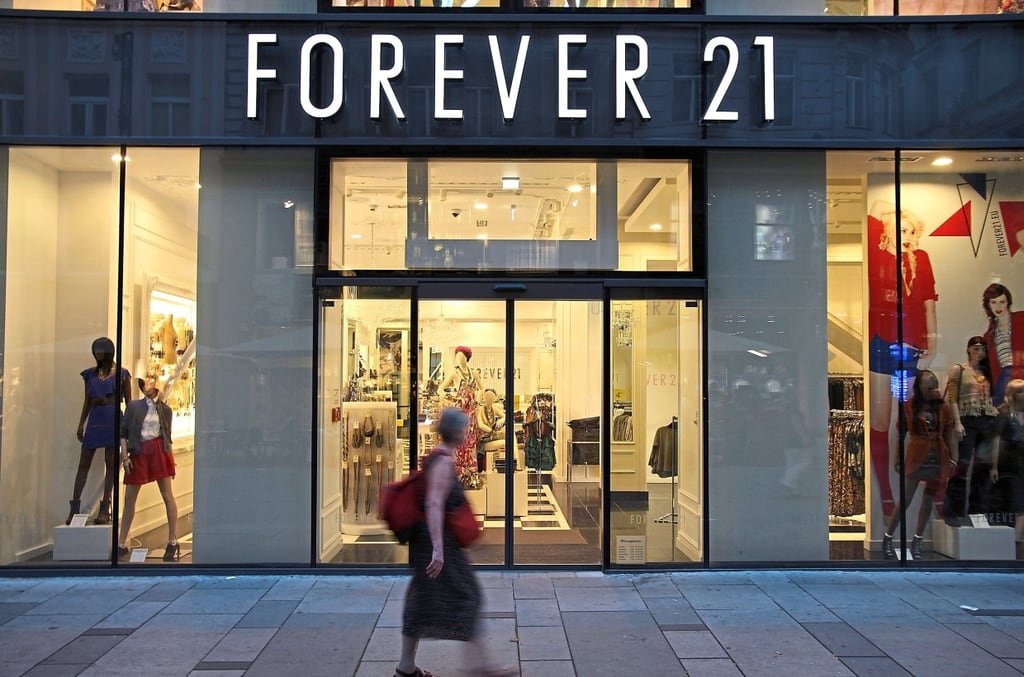Is Fast Fashion Really on the Decline?
Fast fashion has long been a staple in the wardrobes of fashion-conscious individuals. The allure of being able to effortlessly access the latest trends at budget-friendly prices has made it a popular choice for consumers around the world. Whether you’re strolling through the aisles of fast fashion giants in physical stores or browsing their online counterparts, the appeal of these brands seems to be omnipresent.
In today’s fast-paced digital age, the convenience of fast fashion has only been amplified. With a few clicks, shoppers can explore a vast array of styles and outfits, keeping up with the ever-evolving fashion landscape. It’s almost impossible to find a closet that doesn’t house at least a few items from these fast fashion brands.
Despite its widespread popularity, fast fashion faces mounting scrutiny and criticism, largely due to its environmental impact and labor practices. The fashion industry, particularly the fast fashion sector, is known for its heavy carbon footprint and contributions to pollution. Additionally, concerns regarding underpaid and overworked laborers in developing countries where fast fashion production is concentrated have raised ethical questions.
However, the paradox of fast fashion is that even as these concerns come to the forefront, consumers continue to flock to these brands. The attraction of affordable, on-trend clothing seems to outweigh the ethical and environmental considerations for many shoppers. The question arises: will this ever change?
Efforts are being made to address these concerns. Sustainable fashion movements, ethical brands, and conscious consumerism have gained traction in recent years. Many individuals are now actively seeking out eco-friendly and ethically produced clothing. This shift in consumer behavior has forced some fast fashion companies to rethink their practices and incorporate more sustainable materials and ethical labor practices into their operations.
The global fashion industry is undoubtedly at a crossroads. While fast fashion still holds its grip on the market, there is a growing awareness of the need for change. Consumers are increasingly demanding transparency, accountability, and sustainable options. Whether fast fashion will continue to dominate or eventually give way to more conscious alternatives remains to be seen.
The Unquenchable Thirst for “Fashionability”
The world of fashion has undergone a dramatic transformation over the years. It’s not just about creating clothing anymore; it has evolved into a societal phenomenon deeply influenced by consumerism. Michael Solomon, a renowned expert in consumer behavior, aptly describes it as “the disease of a society,” highlighting the powerful impact of fast fashion on our lives today.

The cost of a fast fashion item, including materials, labor, overhead, and transportation, is very low because it is not made to last
Fast fashion, a term that has become increasingly synonymous with our modern shopping habits, represents a revolutionary shift in the fashion industry. It’s not just about clothes; it’s about the insatiable desire to stay “on-trend” and constantly update our wardrobes. This phenomenon has reshaped how we perceive and consume fashion.
The rapid rise of fast fashion brands can be attributed to various factors, including globalization and the 21st-century logistics revolution. These brands have leveraged technological advancements and streamlined supply chains to offer consumers an unprecedented speed of product turnover. Artificial intelligence, in particular, has played a pivotal role in ensuring that fast fashion brands can swiftly adapt to changing trends and consumer demands.
Take Fashion Nova, for instance, a prime representative of the new wave of fast fashion. Operating as an online retailer, Fashion Nova astounds with its ability to launch 600-900 fresh designs every single week. The allure of significant discounts, often up to 80% off, is a constant temptation for shoppers year-round.
What’s more, the affordability of fast fashion items has been a key driver of their popularity. In the 1950s, purchasing a ready-made dress meant setting aside a significant sum, equivalent to about $72 in today’s currency. However, stepping into a fast fashion store like Forever 21 nowadays allows one to acquire a similar dress for as little as $12. This remarkable cost difference is because fast fashion items are not designed for longevity but for instant gratification.
Zara, often credited as the pioneer of fast fashion, has perfected the art of speed. It takes less than six weeks for Zara to transform an initial sketch into a finished product. With a design team numbering up to 300 people, Zara can unveil a staggering 12,000 new designs each year, catering to consumers’ insatiable hunger for the latest trends.
Yet, even Zara’s prolific output pales in comparison to the latest generation of fast fashion brands—those that have pushed the boundaries further with ultra-fast fashion. Missguided and Fashion Nova, for example, have taken this concept to new heights by introducing mind-boggling numbers of new products on a regular basis.

Fashion Nova, a representative of fast fashion brands 2.0, operates as an online retailer, releasing 600-900 new designs every week and offering discounts of up to 80% throughout the year
The influence of social media has been another driving force behind the fast fashion phenomenon. In today’s digital age, the power of social media platforms cannot be underestimated. Beyond just influencers and fashionistas, everyday individuals have embraced the opportunity to showcase their outfits and style choices through hashtags like #ootd (outfit of the day).
Social media is inherently dynamic and visually-oriented. Fast fashion brands have capitalized on this by continuously collaborating with celebrities and influencers. These partnerships have the transformative ability to turn a simple outfit into the latest trend, further fueling consumers’ desire to stay relevant and stylish.
In essence, fast fashion has cultivated a culture where consumers believe they must shop more frequently to maintain their “on-trend” status. This compulsion has taken root among the youth in Vietnam and around the world. According to a survey conducted by Asia Plus, 26% of respondents admitted to shopping for clothes 2-3 times per month, with an additional 52% making monthly clothing purchases. Moreover, Vietnamese consumers have displayed a strong inclination toward foreign-branded fashion products.

Fast fashion brands continuously collaborate with celebrities and influencers, individuals with the ability to turn anything they wear into a trend
Fast fashion was born to cater to the insatiable demand of today’s youth, offering them a means to satisfy their fashion cravings immediately. However, it also raises important questions about the environmental and ethical implications of such rapid consumption. As the fashion industry continues to evolve, striking a balance between fashionability and sustainability becomes a pressing concern—one that consumers, brands, and society as a whole must address to ensure a more responsible fashion future.
The Glamorous Facade that Masks Dark Realities
The allure of fast fashion has managed to captivate consumers, offering them a seemingly endless array of trendy clothing options at incredibly affordable prices. However, this seemingly glamorous facade conceals a host of dark and troubling realities that lie beneath the surface.

“Today, not only influencers and fashionistas but also everyday people like us enjoy sharing photos.”
One of the most pressing concerns associated with the fast fashion industry is its devastating impact on the environment. The relentless pursuit of low-cost, high-speed production often leads to the use of cheap and environmentally harmful materials. Polyester, a commonly used synthetic fabric, stands as a stark example. The production of polyester alone results in the release of a staggering 706 million tons of carbon dioxide into the atmosphere each year. Moreover, the shedding of microfibers from synthetic textiles during washing contributes to the pollution of our oceans and waterways.
Even natural materials like cotton, touted for their eco-friendliness, come with their own set of issues. Cotton production primarily occurs in developing countries and demands copious amounts of water and chemicals. This leads to water scarcity, increased waste, and significant harm to both the land and local biodiversity.
Leather, a sought-after material in fashion, also has its dark side. The dyeing process of animal hides requires large quantities of chemicals, further adding to environmental pollution. It’s crucial to recognize that the fashion industry ranks as the second-largest water polluter globally, second only to agriculture.
The plight of workers within the fast fashion supply chain is another disturbing aspect. Laborers often endure hazardous and exploitative working conditions while receiving inadequate compensation. These conditions not only fail to meet basic human rights standards but also subject workers to the harmful effects of toxic chemicals, both physically and mentally.
Fast fashion also takes a toll on consumers themselves. In the quest to stay “on-trend,” consumers are enticed into a culture of excessive consumption. The relentless cycle of fast fashion, marked by monthly releases of new collections and frenzied discount campaigns, results in shorter lifespans for garments. These items are often of lower quality and quickly fall out of fashion, encouraging a disposable mentality among consumers.
In conclusion, while fast fashion may appear glamorous on the surface, it carries significant hidden costs. These costs are borne by the environment, exploited workers, and consumers themselves. As we continue to enjoy the convenience and affordability of fast fashion, it’s crucial to remain aware of these dark realities and consider more sustainable alternatives for the sake of our planet and the well-being of all those involved in the industry.
Is Fast Fashion Fading Away?
In recent years, the winds of change have begun to rustle through the world of fashion. A growing number of consumers are reevaluating their shopping habits, shifting their focus toward sustainability and questioning the ethical and environmental standards upheld by fashion brands. These changing tides are prompting fast fashion brands to scrutinize their production methods and their overall impact on the environment.
In 2015, a Nielsen survey revealed a significant shift in consumer behavior, with 66% of global consumers expressing a willingness to pay extra for products and services that adhere to ethical and environmental standards. This shift in consumer consciousness suggests that fast fashion may be losing its grip on shoppers, as demonstrated by the turbulent trajectory of several once-thriving fast fashion giants.

“Forever 21’s departure is not because consumers have lost interest in fast fashion; it’s simply that they are seeking newer items produced even faster and delivered right to their doorstep.”
The case of Forever 21 serves as an illuminating example. The downfall of Forever 21 was not solely due to a waning interest in fast fashion. Instead, consumers are increasingly gravitating toward newer, faster-produced, and more conveniently delivered options. In January 2020, after filing for bankruptcy, Forever 21 made the decision to sell itself for $81 million to its landlords while awaiting court approval. Similarly, Arcadia Group, the parent company of fashion powerhouses Topshop and Topman, also filed for bankruptcy and shuttered all its stores in the US.
Even H&M, a titan in the fast fashion realm, faced its share of challenges. In 2018, H&M reported a staggering 62% profit drop in the first quarter. The company’s inventory levels reached a staggering $4 billion, and it was forced to close down 170 stores. Michael Solomon, an expert in consumer behavior, remarked, “Currently, fast fashion companies are very concerned, and they are trying to change.”
However, the Harvard Business Review suggests that a significant disconnect exists between what consumers proclaim and what they genuinely purchase. Research conducted by Nightingale underscores that customers seldom alter their shopping habits solely due to environmental concerns.

“We are driven by the fashion industry to keep shopping every season.”
Customers argue, “We don’t have many options to be environmentally friendly when shopping. We are driven by the fashion industry to keep shopping every season.”
Despite the prevalence of “greenwashing” campaigns and sustainability commitments across the fashion landscape, what consumers and critics require are tangible and transparent actions. This demand is particularly relevant when it comes to fast fashion brands, where rapid production is deeply embedded in their business model.
Fast fashion brands are making concerted efforts to rectify their practices. However, the crucial question remains: can these swift corrective measures be enough to transform the very DNA of an entire industry? Only time will tell whether fast fashion will continue to hold sway or if a more sustainable and ethically conscious fashion paradigm will emerge.



Raymond Garner
I just could not leave your web site before suggesting that I really enjoyed the standard information a person supply to your visitors Is gonna be again steadily in order to check up on new posts
Amos Hubbard
you are in reality a just right webmaster The site loading velocity is incredible It seems that you are doing any unique trick In addition The contents are masterwork you have performed a wonderful task on this topic